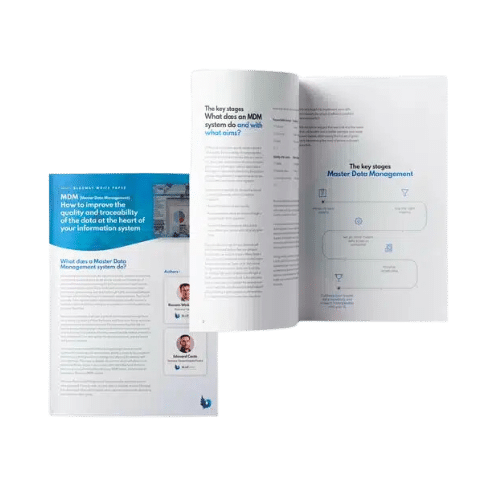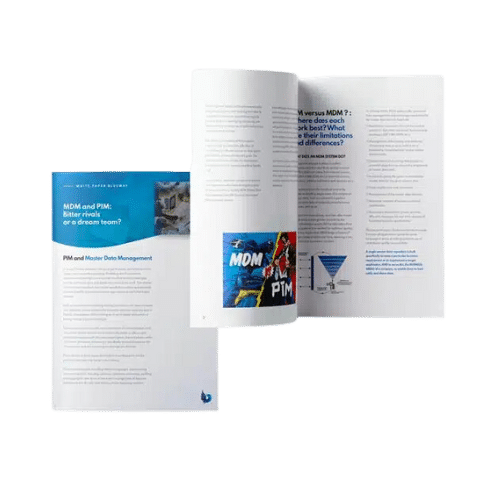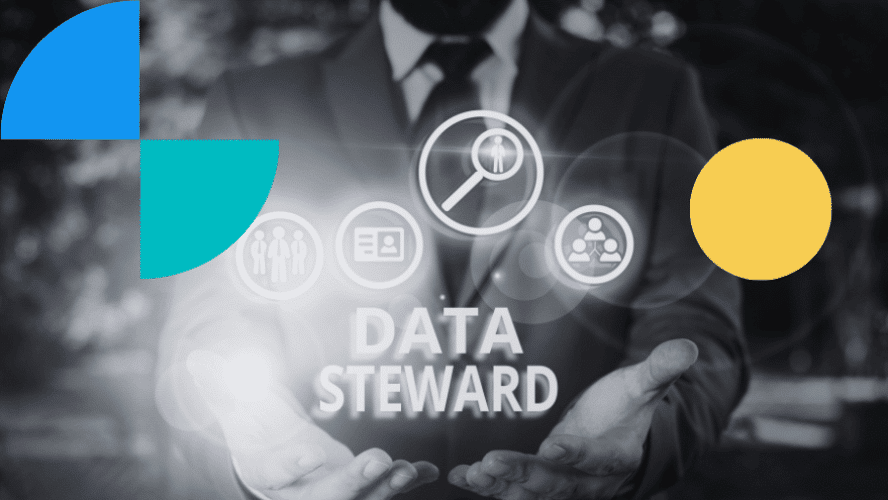The amount of data collected by businesses is constantly expanding, and the need to process it likewise. Data-related professions are therefore of unprecedented importance, all the more so given the backdrop of rapid digitalisation. Driven by the wish to make best use of their data, businesses are increasingly making use of specialists in the field. From data architects to data analysts, these roles are genuinely useful and each has its own challenges and key features. A data steward is responsible for documenting data, and is thus central to the data leveraging process, forming a crucial link in data processing.
What is a data steward?
The role and work of a data steward
While functional specialists such as the data owner ensure the final quality of data, the data steward works on data documentation. The role entails tracking and gathering information from employees. The ultimate objective is to make it easier for functional business departments to access data and, in so doing, maximise the use made of the data that the business collects.
The data steward’s role is both practical and educational. They need to have in-depth knowledge of processes and an overview of data flows, and be able to brief staff about the benefits of their work.
Having the ability to combine business data, data stewards make it easier for business users to understand these data flows, and therefore leverage the value of data in the business.
In practical terms, data stewards:
- Centralise data about data: they collect valuable information about how data is used, its potential obsolescence, the changes made to it, and the possible errors it might contain.
- Check data quality: in parallel with the usual verifications, they put systematic controls in place and apply remedial measures if necessary.
- Provide metadata: metadata describes data sets in the form of an object or label. Once entered, metadata makes it easier for the business to access the data.
- Suggest appropriate formats for technical and business documentation: the aim is easier consultation by anyone interested, and to facilitate data maintenance.
- Protect data: they determine protocols for data access, distribution, archiving and deletion, ideally ensuring that data remains both inviolable and confidential.

Master Data Management : data quality and traceability at the heart of your information system
The purpose of data stewards’ work for the business and its data
For the business, employing a data specialist is primarily a way to orchestrate its data governance. Imposing some kind of structure is increasingly essential at a time when the amount of data collected could now truthfully be said to constitute “data lakes”, making quick and meaningful sorting absolutely necessary. Data stewards bring order to data that is difficult to control – and sometimes under-used – thereby giving their businesses a competitive advantage.
Data quality is also a major issue. The speed of data flows and exponential rise in applications is creating a substantial proportion of errors and redundancy. Highly-regulated industries must without fail be able to ensure their data is compliant. Labelling data sets in the way the data steward does is one way to ensure quality and currency.
Data stewards also help to increase the value of data by using labelling consistent with business codes. Adding metadata encourages the use of the data collected and makes it easier to consult.
Another central issue in current data strategies is data unification, helping to de-silo business departments and boost collaboration. The use of current, practical document formats creates a gateway for business departments, accelerating data processing.
Lastly, unification generates synergies, with instantaneous use of data by the business creating real-time collaboration, as data is no longer forced to shuttle tediously back-and-forth.
Methods, tools and solutions used by data stewards
Data stewards have a number of tools at their disposal to help them successfully complete data set referencing work:
The data stewardship platform
Vital to a data steward’s work, such a platform, which takes the form of a dashboard, serves to facilitate orchestration of data projects.
This data stewardship system enables data stewards to coordinate their work, certify data and monitor the progress of tasks within each project. The highly collaborative nature of data stewardship systems allows functional management to get involved in enhancing master data, guided by the data steward.
A data stewardship application accelerates reliable and participative data documentation for the data steward. The data stewardship system also provides some very useful automation features, such as data validation rules, sometimes even AI knowledge gathering. By making routine management easier, it helps to create a complete and error-free master data repository.
Master data management systems
Using an MDM solution to manage the business’ master data, data stewards consolidate data into a single master data repository. Up-to-date data can then be unified despite coming from a variety of source applications.
Master data management provides:
- Consolidation of application data: data collected from different business applications is centralised and optimised within the MDM system
- Data controls: rules for entering and managing data unify the consolidation process
- Traceability: keeping track of changes from one process to another ensures project integrity
- Data quality: current standards are followed when giving data a confidence index and for data consolidation
- Predictive capability: application mapping, relationships between data, and scenario analyses improve understanding of the data lifecycle.

MDM versus PIM: bitter rivals or a dream team ?
Metadata management and data cataloguing
Metadata is a flourishing field, and rightly so. Whether data is technical, functional or operational, metadata management allows more value to be extracted from data sets.
Metadata management systems are useful to both business employees and data stewards. The latter use them to improve data administration, as managing access and data sharing, integration, analysis and maintenance all become easier to control.
Metadata management enables data stewards to vouch for data consistency more confidently. More lasting terminology extends data’s lifespan, and therefore improves service performance.
Metadata management systems also provide reports and analyses based on a data catalogue.
This data catalogue constitutes a smart database, accessible by stakeholders to find and potentially share data sets. Data quality and completeness depend largely on the data steward’s performance.
Data roles and data’s many dimensions
Data is now a central element, used in terms of both strategy and grassroots operations. A number of other key roles process data from technical and functional viewpoints. Mention can be made of data architects, responsible for data infrastructure, data owners whose role is to map data and protect it, data analysts for extraction and strategic interpretation, and data scientists who build predictive models on the basis of the data extracted.
Data use cases are also very numerous, and call for a range of software solutions:
- Centralisation and unification MDM: the single master data repository makes data consultation and the implementation of data projects a simple matter.
- ESB: the Enterprise Service Bus contributes to the re-engineering of data flows between all generations of applications.
- Data exploitation by processes BPM: data is highly valuable to business processes, which must be truly part of the IS and make use of process-oriented data.
- Openness to partner companies – API Management: the rising number of data interchanges with outside companies requires finely-tuned API administration and control over data consumption.
It can be seen that data is multi-faceted. Data collection and management must therefore take into consideration all dimensions and usages throughout its lifecycle.
Data stewards are part of any worthy data processing strategy, but the same ought to apply to business applications. It is only by taking a step back from data that a business can fully leverage its value.
At Blueway, we firmly believe that the success of a business’ data strategy is based on a comprehensive, shared vision of processes and data, which is why we offer one platform that unifies all these aspects of data interchange, with ESB, BPM, MDM and APIM.

Want to discuss your data management challenges with an expert?





